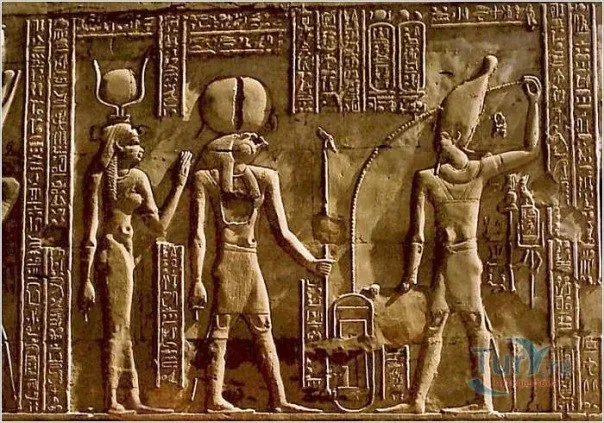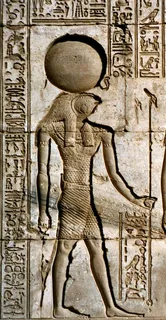Pyramids’ Alien Gift: Building Secrets from Beyond?
One of the most intriguing and controversial theories about ancient Egypt is the idea that extraterrestrial beings may have played a pivotal role in the construction of the pyramids. This theory suggests that thousands of years ago, aliens visited Earth and imparted advanced construction techniques to the Egyptians, enabling them to create the massive, mathematically precise pyramids that have fascinated scholars and the public for centuries. The idea that the Egyptian pyramids, especially the Great Pyramid of Giza, were the product of alien intervention adds a thrilling, mysterious layer to their already impressive history.

The Great Pyramid of Giza, in particular, stands as a marvel of architectural and engineering achievement. Built with remarkable precision and aligned perfectly with certain celestial bodies, it has left experts in awe of its complexity and accuracy. The layout of the pyramids mirrors the constellation of Orion, aligning with the stars in ways that were presumably beyond the astronomical knowledge of the ancient Egyptians. The precision of the stone cuts, the symmetrical arrangement, and the sheer magnitude of the structures have led some to ask whether human builders could have accomplished such extraordinary feats with the tools available at that time. These questions have fueled speculation that an advanced extraterrestrial civilization may have had a hand in guiding the Egyptians during the construction of these monumental structures.

Advocates of the alien intervention theory argue that the knowledge required to create the pyramids, particularly the techniques needed to cut, transport, and place massive stone blocks with such accuracy, would have been impossible without outside assistance. They suggest that only a highly advanced civilization could have known how to build structures with such precision and how to arrange them in accordance with astronomical phenomena. Some even propose that the pyramids were intended to be far more than tombs or monuments; according to some theorists, they may have served as power sources, energy conductors, or even as communication devices with extraterrestrial civilizations. This idea of the pyramids as ancient power generators is based on the pyramids’ unique design, which is unlike that of any other structures from the ancient world.
The construction methods used to create the pyramids are another focus of this theory. Each block, weighing several tons, was transported from quarries located miles away from the building site, and somehow lifted and placed with millimeter precision. Even today, scientists debate how the ancient Egyptians managed this feat without advanced machinery. The sheer scale and complexity of the task have led some to speculate that the Egyptians may have had access to knowledge or technology far beyond what we understand. Ancient texts and hieroglyphics provide hints of beings descending from the sky, often depicted with elongated limbs and supernatural abilities. Proponents of the extraterrestrial theory interpret these depictions as evidence that the Egyptians interacted with beings from other worlds, who may have shared techniques for lifting and transporting massive stones using anti-gravity or advanced engineering tools.

The theory that the pyramids were designed as energy sources is another fascinating aspect of this hypothesis. Some theorists propose that the pyramids may have been positioned to harness the Earth’s natural energy, acting as massive conductors that transmitted energy wirelessly or even across interstellar distances. These ideas align with theories by scientists like Nikola Tesla, who believed in wireless transmission of energy. This aspect of the theory suggests that extraterrestrials might have helped the Egyptians build the pyramids as part of a larger, advanced energy grid, potentially linking Earth with other planets or spaceships orbiting the planet.
Conventional historians and archaeologists attribute the construction of the pyramids to the exceptional skill and knowledge of the ancient Egyptians. They argue that the Egyptians developed sophisticated engineering and architectural techniques independently, using tools and methods appropriate to the time. According to this view, the Egyptian civilization achieved these feats through human ingenuity, driven by religious and cultural motivations to honor their gods and rulers. However, despite these explanations, the alien theory has captivated the imaginations of many, inspiring debates and explorations that seek to uncover the truth about humanity’s past.

The question remains: are the pyramids purely a human achievement, or is there more to the story? As modern technology advances, researchers continue to investigate the construction of these ancient monuments, and new theories emerge, each offering different perspectives on the pyramids’ purpose and origins. Whether the pyramids are purely human creations or the product of extraterrestrial intervention, they continue to be among the most impressive and mysterious accomplishments in human history. They stand as enduring symbols of an ancient civilization that achieved greatness, whether through its own genius or with a helping hand from beyond the stars. The debate rages on, as we continue to look at these awe-inspiring structures and wonder what secrets they might hold.






